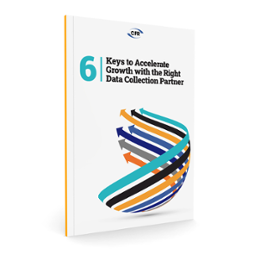
What is Product-Market Fit?
 Most people believe that a good product is the cornerstone of a great business. And while a good product does, indeed, have the potential to provide some functional stability for a company, the true foundation of any enterprise rests on the market around it. A great product just isn’t useful (i.e., “profitable”) unless a lot of people are willing to pay for it. Thus, the trick is matching a product to a market, finding that sweet spot where demand meets supply to mete out lucrative earnings. In professional terms, it’s called “product-market fit.” Here’s how to ensure that you have it so that you can build a company with an offering that not only addresses a unique need (better than the competition, of course), but that can withstand the fluctuation of conditions over time that is always inevitable:
Most people believe that a good product is the cornerstone of a great business. And while a good product does, indeed, have the potential to provide some functional stability for a company, the true foundation of any enterprise rests on the market around it. A great product just isn’t useful (i.e., “profitable”) unless a lot of people are willing to pay for it. Thus, the trick is matching a product to a market, finding that sweet spot where demand meets supply to mete out lucrative earnings. In professional terms, it’s called “product-market fit.” Here’s how to ensure that you have it so that you can build a company with an offering that not only addresses a unique need (better than the competition, of course), but that can withstand the fluctuation of conditions over time that is always inevitable:
The Lean Product Process
In 2015, Dan Olsen wrote a book entitled The Lean Product Playbook. In it, he embraces Marc Andreessen’s idea of “product-market fit” and devises a systematic plan for achieving it. Condensed into six steps, Olsen’s plan, the “Lean Product Process,” is a template with which businesses (large or small, established or start-up) can accurately gauge market need, as well as measure their own ability to address it. Read on for a brief summary.
Step 1: Identify Your Customer
You can’t help someone (i.e., deliver a solution to them) unless you can recognize who needs your assistance in the first place. To identify these people, you must assess the larger market, breaking it down into segments of people with similar characteristics, similar needs and similar behaviors. With a specific buyer persona in mind, you are better able to design a product that truly solves a problem.
Step 2: Understand the Urgent Need(s)
Some market segments have more urgent needs than others. Pick the one(s) with the most pressing and — this is key — the most poorly served needs, and you put yourself in the position of being able to offer a unique value (see Step 3) to a specific group of people.
Step 3: Establish a Value Proposition
You create value when you can offer something someone else cannot. Find the gap between the current demand and the current offerings so that you are able to develop a product that’s better than the competition’s. Be precise, and be concise. And think outside the box. You need a creative, innovative and attractive product in order to outperform everything else on the market.
Step 4: Determine a Set of Minimum Viable Product (MVP) Features
Now’s the time to think about the features your customers will want in a product. But it’s not the time to go crazy. At this stage, you need to have a plan for building a product that’s good enough to deliver your value proposition, but not a lot more. (You can add bells and whistles later!)
Step 5: Create a Prototype
Bring your idea to life by actually building your MVP prototype. Pay attention to fidelity and interactivity, choosing a level of each that will best enable your potential customers to evaluate your idea and provide feedback of its usability and attractiveness, but that won’t drain your time, budget and other resources.
Step 6: Test Your MVP Prototype
Now get out there and test your idea with your target customers. Observe them. Listen to them. Ask for feedback. And then use what you learn. If you have to (and you will), start the process over. The idea is to find a product that resonates with your target market, that delivers on your proposed value proposition and is so appealing to your customers that they buy it and recommend it to others.
Want to Learn More?
The process to determine product-market fit is a lot like the market research process. Each acts as insurance for good business performance, and each yields better results when practiced over and over again. Markets are constantly changing; to remain competitive with offerings that serve meaningful purpose at any given time, companies must continuously evaluate the market and their place in it. Contact our team at Communications for Research (CFR) to learn how solid market research methodologies make finding the perfect product-market fit feasible.
You might also like to download our free eBook, “6 Keys to Accelerate Growth with the Right Field Data Collection Partner,” for additional tips on improving your data collection strategies.



